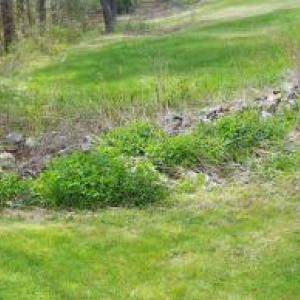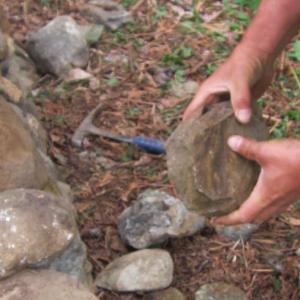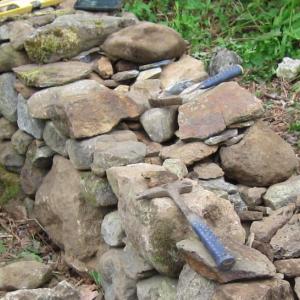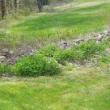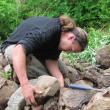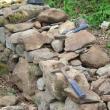This Week in Lincolnville: Rock walls are forever
 The wall Dryw Hunt is building on the left ends in the remains of the wall I built 20 years ago.
Photo by Dryw Hunt
The wall Dryw Hunt is building on the left ends in the remains of the wall I built 20 years ago.
Photo by Dryw Hunt
 Hands are the main tool in building anything.
Photo by Diane O’Brien
Hands are the main tool in building anything.
Photo by Diane O’Brien
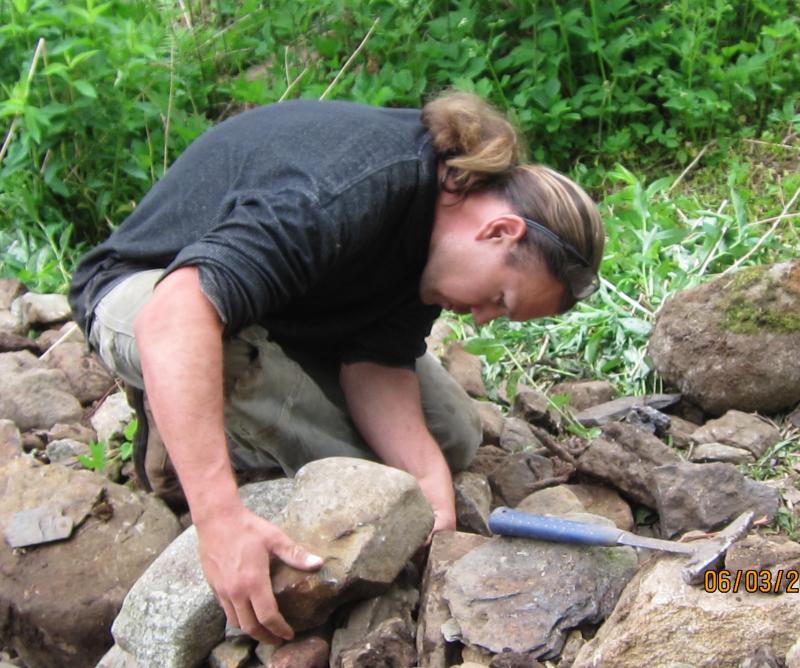 Finding the perfect fit.
Photo by Diane O’Brien
Finding the perfect fit.
Photo by Diane O’Brien
 The tools are simple, a rock hammer, shovel, wheel barrow, and of course, cell phone.
Photo by Diane O’Brien
The tools are simple, a rock hammer, shovel, wheel barrow, and of course, cell phone.
Photo by Diane O’Brien
 Sign up for the Library’s card making workshop with Edna Pendleton and Peggy DiGiovanne.
Sign up for the Library’s card making workshop with Edna Pendleton and Peggy DiGiovanne.
 The wall Dryw Hunt is building on the left ends in the remains of the wall I built 20 years ago.
Photo by Dryw Hunt
The wall Dryw Hunt is building on the left ends in the remains of the wall I built 20 years ago.
Photo by Dryw Hunt
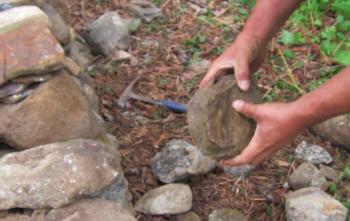 Hands are the main tool in building anything.
Photo by Diane O’Brien
Hands are the main tool in building anything.
Photo by Diane O’Brien
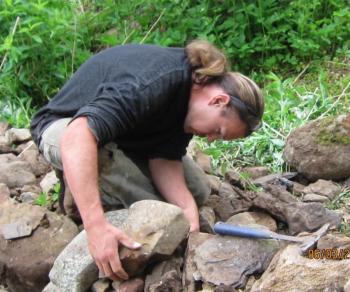 Finding the perfect fit.
Photo by Diane O’Brien
Finding the perfect fit.
Photo by Diane O’Brien
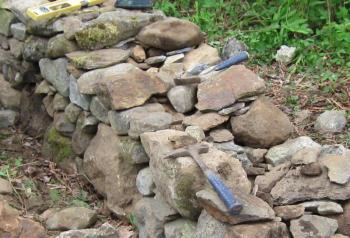 The tools are simple, a rock hammer, shovel, wheel barrow, and of course, cell phone.
Photo by Diane O’Brien
The tools are simple, a rock hammer, shovel, wheel barrow, and of course, cell phone.
Photo by Diane O’Brien
 Sign up for the Library’s card making workshop with Edna Pendleton and Peggy DiGiovanne.
Sign up for the Library’s card making workshop with Edna Pendleton and Peggy DiGiovanne.
Rocks endure. They lay where the glacier dropped them 10, 000 years ago, that is, until frost or man move them. When frost does the moving, the rocks tend to travel up through the subsoil until finally, one spring they appear on the surface. And that’s generally when man steps in.
The rocks got in the farmer’s way, stubbing the plow, breaking the blade on his scythe. And so began man’s battle with the rocks, the bane of Maine farmers. I imagine the whole family got into this annual springtime war against rocks: some behemoths were heaved out with a team of oxen, while most were probably picked up and carried to the edge of the field. Big ones could be rolled, end over end, cobbles thrown to the pile. A cart or sledge would be loaded and dragged, by man or beast, to the growing “wall”, the hodge podge boundary that often marked property lines.
Many of these walls still meander through what is today forest and are a sure sign that once this was cleared land — cropland, pasture, or hayfield. Many of these walls were carefully built, rock fitted on rock in a tight puzzle that still holds today. Rock walls endure down through the centuries, often the only sign left by the people who lived out their lives on the very spot we live today.
We have one of those hodge podge walls, and I wrote about it long ago:
April [1996], and I'm building another stonewall. How many Aprils, how many walls have I built in twenty-six springs, I wonder, heaving yet another boulder onto the top? Most, of course, wouldn't be identifiable to anyone else as actual walls. Piles of stones, overgrown, tumbled down, sad attempts at stability, none deserving to be considered alongside the century-old walls I so admire.
The first walls were just places to put all the rocks we found in our garden, and kept finding, and keep finding. Truly, the New England farmer's most reliable crop is rock. We rolled the big ones to the side, and I arranged them into a semblance of a real Maine wall. Valiantly, I tried convincing my husband we should use all the stones, big and small, that we dug out of the garden in walls, but his look said clearly: "Are you crazy? Just get them out of here." Soon, I gave up and joined him flinging all but the monsters over the fence and into the woods.
Within a few years the garden was too small; we cut down those woods, first fencing goats, then pigs among the undergrowth, and finally, kicked over the rotten stumps and tilled it up. And there were all those rocks, the ones we'd heedlessly tossed as well as the regular crop. My walls, built with such hope, now ran down the middle of where the corn should be growing, and only harbored stubborn perennial weeds. One by one we moved them all again.
We had our own three small boys living with us then, and other small boys I babysat after school, making an energetic workforce that I figured I could harness in my relentless struggle with the rocks. "A penny a rock," I told them, "in the bucket, and hauled out of the garden." Though I tried for several seasons to bring along the younger ones in this money-making scheme, I never fooled them longer than an afternoon or two. Rocks, big and small, piled up helter skelter along fences or were simply heaved out of sight.
Truthfully, I'm the only one in the family who's ever seen these rocks as anything but a nuisance. The year we watched "All Creatures Great and Small" on TV I fell in love with the wonderful stone barnyards on the Yorkshire farms. We had stone and we had a barnyard — why not stonewalls instead of scrubby, old board-and-rusty- wire fences? What a bad idea that was. Within a year we had lumpy, manure covered heaps of stone that even two decades later twist our ankles and jam our pitchforks.
Rocks, of course, can be hazardous and I've had my share of mishaps with them from smashed fingers to pulled muscles. My youngest remembers vividly the morning we were home alone working out back and I carelessly rolled a monster onto a shovel lying on the ground -- WHACK! Up came the handle and split open my forehead. My son watched in horror as blood poured dramatically down my face, when he heard my father's car pull in the driveway. He ran for Grampa, who found me reeling against the porch protesting that I was just fine. And, after a rush trip to the doctor's to be stitched up, I was.
There were some successes. One spring I built a nice wall across the front of the house to bound a flower garden. Our middle son was just a couple of months old, and strenuous, physical work felt wonderful to my body made heavy and slow with pregnancy and nursing. That wall, or anyway, some version of it still defines my front garden. Why, just last spring, the year that boy turned twenty-one, I dismantled it to really dig out the goutweed that had permeated its every crevice, reassembling it for probably the fifth time.
Which brings me to this, my fifty-first April and probably, tenth wall. Building this wall serves a dual purpose. The most obvious is we have a pile of rock to be disposed of. Some foundation work last fall left a small mountain of rock, nice big ones, on the edge of our pasture. The other can be seen everywhere these days on women of all ages -- shapely, muscular arms. Have you noticed? Movie stars and models, waitresses, your next door neighbor, best friend, daughter, maybe your mother [and today, Michelle Obama!]. Women are working out, going to gyms, lifting weights. I want arms like theirs.
I do try hard to do the daily twenty minutes of exercise. A morning walk is okay; I'm nosy enough to enjoy the mile and a half to Tanglewood corner and back, checking out my neighbors' projects, inventorying potholes on the Canaan [now Ducktrap] Road, seeing who's got their garden in. But bad weather puts me on the Nordic Track where twenty minutes seems like two hours, even with the radio news or a book-on-tape. I can't stand the boredom. How could I possibly lift weights?
Though not a Mainer by birth, I like to think I'm one by inclination. It just feels wasteful to expend all that energy to no purpose, no visible accomplishment. (Sexy arms don't count to a real Mainer.) But if I lift a few hundred rocks I'll get a wall and cool-looking arms, won't I? So, ever the optimist where my abilities are concerned -- after all, nobody taught the early farmers to build walls; probably plenty of their first attempts are buried under the leafmold -- I've begun my most ambitious wall, ninety feet dividing our pasture from the front yard. And I'm surprised to find I can finally build a wall that looks like one.
I started with posts and string so it would be straight. Now that was a first! And I've learned to move rock without hurting myself. With a pry bar and stone for a fulcrum I can wiggle a buried rock back and forth enough to drop small stones under it and eventually heave it out. The really huge boulders can be rolled, or flipped over and over, even if it takes several days, a few flips a day, down on hands and knees pushing with my whole body; medium rocks get lifted, and carried -- feel those biceps!
But after all, it's brain power not brawn that keeps a wall intact over the years. Each rock has its distinctive shape, and if you study it and the developing wall there's an obvious spot for each one. Turn it over, try it here. Put it there and it teeters; the frost will topple it the first winter. But over there it fits in snugly and ties the whole wall together. Each time a rock drops in perfectly there's a corresponding, satisfying "there!" deep inside where I visualize this wall.
Vision didn't often match reality in earlier walls; the thirty year old was too distracted by a fussy baby, or the forty year old worried by an elderly parent, even the twenty-five year old -- physically strongest of all the women I've been -- was trying too hard to be a pleasing wife to concentrate on doing the job well. Maybe wall building is one of those things not always done best by the young.
There's a bench on the west side of our house where in late afternoon the April sun is warm. I like to sit and admire my wall here, all thirty feet of it finished to date. At the rate of half an hour or so a day it will be at least two weeks until my wall reaches the road. Hopefully, rocks and wall will come out even.
When I'm eighty and sunning my tired, old arms on a spring afternoon I wonder if the wall will have disappeared, covered by the alders and raspberries we first found here? I like to think it won't matter, that it will be enough to know I once built a real stone wall, whether anyone can see it or not._
I wonder how many people know about the Lincolnville Bulletin Board, the Google group we use here in town to send each other all kinds of messages? We post when our cat didn’t come home, when we have a couch for sale, when we need to borrow baby equipment for a grandchild’s visit. The other morning I read that someone was looking for work building rock walls. Well, that wall I was so proud of in 1996 – it’s in serious need of being built into a real rock wall.
So on a May morning in 2016, on a whim, I contacted Dryw Hunt, builder of rock walls and a recent arrival in town, moving here with his family all the way from Union. Yes, he said on examining the pile of rocks that made up my wall, he could rebuild it. I said there were plenty of other rocks on the property if there weren’t enough there. Oh yes, he knew there’d be plenty of rocks.
Dryw’s wall, framed by apple trees and old roses, is a work of art, each rock picked up, considered and then, if chosen, placed just so in the spot waiting for it. It will be there for centuries, even if the rising waters of Penobscot Bay eventually lap at its rocks. Long after we’re gone, after our house is gone, after we’re forgotten, that meandering wall made of the rocks of our labor and fit together by the skill of a wall builder will stand.
CALENDAR
MONDAY, June 6
Selectmen meet, 6 p.m., Town Office, televised
WEDNESDAY, June 8
Planning Board, 7 p.m., Town Office, televised
THURSDAY, June 9
Free Soup Café, noon-1 p.m., Community Building, 18 Searsmont Road
Eight Grade Graduation, 5:30 p.m., Walsh Common
Every week:
AA meetings, Tuesdays & Fridays at 12:15 p.m., Wednesdays & Sundays at 6 p.m.,United Christian Church
Lincolnville Community Library, open Tuesdays, 4-7, Wednesdays, 2-7, Fridays and Saturdays, 9 a.m.-noon. For information call 763-4343.
Soup Café, every Thursday, noon—1p.m., Community Building, Sponsored by United Christian Church. Free, though donations to the Good Neighbor Fund are appreciated
Schoolhouse Museum open by appointment only until June 2015: call Connie Parker, 789-5984
Bayshore Baptist Church, Sunday School for all ages, 9:30 a.m., Worship Service at 11 a.m.
United Christian Church, Worship Service 9:30 a.m., Children’s Church during service
COMING UP
June 15: Field Day and Last Day of School
June 18: Household Hazardous Waste Collection Day
Town Report Dedication
This year’s town report is dedicated to Connie Parker, longtime Schoolhouse Museum director and go-to person for genealogy and other historical queries, as well as organist at both Bayshore Baptist and United Christian Churches, often on the same Sunday. Thank you, Connie!
School News
Congratulations to the twenty eighth graders graduating this Thursday, 5:30 p.m.!
Library News
Librarian Sheila Polson writes: “We have a great workshop coming up on Wednesday, June 15 from 2:30 to 4:30 p.m. at the Lincolnville Community Library for anyone interested in learning how to make their own notecards. Edna Pendleton and Peggy DiGiovanni will show how to create different kinds of notecards using techniques such as embossing, stamping, die cutting and chalking. Edna also plans to demonstrate how she uses her special Big Shot machine to make thank-you, holiday, and other one-of-a-kind cards herself. The library will provide all the materials for each participant to make several cards. There is no charge for the workshop but space is limited so registration is required.” To register, call 763-4343 or email.
Here’s a neat way to help support the Library (which gets no support from tax-payers, unlike most public libraries!). If you shop online at Amazon , the company will donate .5% of the price of eligible items to the Lincolnville Library by going to this link.
Pick of the Week on the LBB
Hi neighbors, I have a robin's nest in my shed on a pile of shelving that "mom" decided to build her nest on. I hear peeps so I am quite sure they are hatched. The mom flies in and out incessantly and I try not to need anything out of the shed. The problem I have is that I promised a friend he could have this shelving. Now we know we have to wait...but I have read that robins sometimes have a second brood...just not sure if they will need the same nest. I am patient....just curious. Thanks, Victoria
Yes, they often do have a second "batch" but if you disturb the nest in between batches, after the first ones have fledged, they will build a new nest. Probably they won't write you a thank you note for it but they will rebuild somewhere else--or possibly the same place after the shelves are gone. Corelyn
We have a pair of robins who built a nest in our Hydrangea tree in front of our house where we have breakfast. Nature show every day. Interesting mating ritual. The guy jumps around, pounces on his spouse and then flies away...sound familiar anyone? -- Fun at The Beach! Tom
There must be a robin poem waiting to be born Krystal
I think the obvious next step is "Lincolnville Bulletin Board: The Musical." Tom can write the lyrics, Rosey can write the script, and I know there are several folks out there who can do the music. It would be a smash! Liz
Absolutely agree. I am on it! Tom
Around Town
Our tree peony is in bloom this week, and I have our old friend Ross Overcash to thank for it. Ross, a great gardener, introduced me to this wonderful plant. Mine had a setback last spring after the winter from hell – it basically looked dead. Ross told me not to give up on it. And sure enough, it began to send up a new shoot. Then another. Today it has two gorgeous large pink flowers, way more dramatic than the common herbaceous peony…
Event Date
Address
United States

